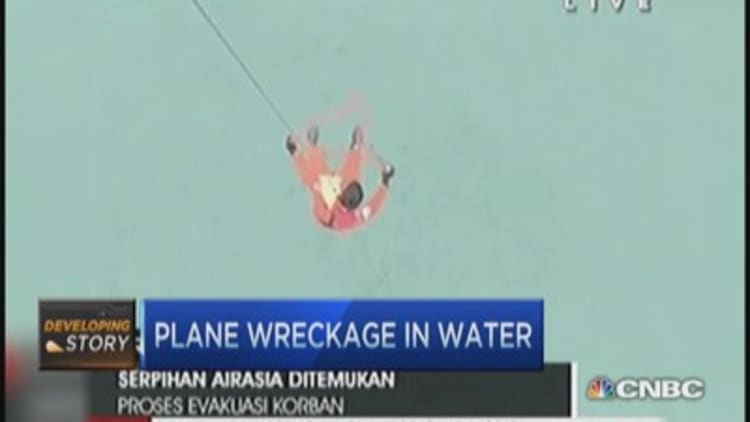By the numbers, 2014 was one of the deadliest years for plane crashes in recent memory. But aviation safety experts say that's no reason to avoid flying.
Early Tuesday, Indonesian officials confirmed that debris found off the coast of Borneo is from AirAsia flight QZ8501, which went missing Sunday carrying 162 people. Officials told NBC that at least six bodies had been found.
Read MoreMissing AirAsia jet: Debris, bodies found
Including the AirAsia flight, 22 accidents in 2014 resulted in 992 fatalities—the most since 2005, when 1,014 people were killed, according to Aviation Safety Network, which tracks accidents globally. Of the incidents this year, eight involved passenger airlines. Among the deadliest: Malaysia Airlines MH370, which disappeared in March carrying 239 people; Malaysian Airlines MH17, which went down following a probable missile attack over Ukraine in July with 298 people, and Air Algerie AH5017, also in July, which crashed with 116 passengers and crew aboard.

Despite the tally of fatalities, experts say the numbers actually underscore how safe flying is. Those eight accidents involving passenger flights represent a record low since the advent of modern aviation in 1946, said Harro Ranter, president of Aviation Safety Network. And they look even brighter given the growth in air traffic. Based on 2000's accident rates per 1 million passengers, we could have expected to see 39 passenger flight accidents in 2014, he said.
"There have been some significant safety improvements since 2000," Ranter said. "It should be reassuring that the safety level is very high at the moment."
Read MoreDeals hidden in airline boarding passes
Nor is there any pattern in recent accidents that shows a common safety issue for travelers to worry about, said aviation expert Jock Williams, a retired Royal Canadian Air Force pilot.
"Things are going nowhere but up," he said. Older aircraft are being replaced, and technology updated. The aviation industry is also quick to glean what it can from any accident, improving policies and training.
Travelers face long odds of being in any airline accident, let alone a fatal crash. "Taken as a percentage, [the risk] is just minuscule," said Williams.
Flying on one of the world's major airlines, on any single flight, an individual has a 1 in 4.7 million chance of being killed, according to PlaneCrashInfo.com, which tracked accident data from 1993 to 2012. Even a person flying an airline with the worst safety records still has odds of only 1 in 2 million.
Read MoreAll aboard? Loyalty program changes for 2015
Over a lifetime, the chance of dying in an "air and space transport incident," as the National Safety Council describes it, are 1 in 8,357. To put that in perspective, by their data from 2010, an individual is more likely to die from causes including heat exposure (1:8,321), choking (1:3,649), in an accident as a pedestrian (1:723), a fall (1:152) or unintentional poisoning (1:119).
Worried travelers can check the safety of their airline, although a good record is no guarantee of future safety. Resources including the Air Transport Rating Agency and AirlineRatings.com assess safety records and rank airlines.
Travelers also can check to see if their airline is part of the International Air Transport Association, which limits membership to airlines that have passed a safety audit. The European Union also maintains a list of airlines banned from operating there because they don't meet safety standards.


